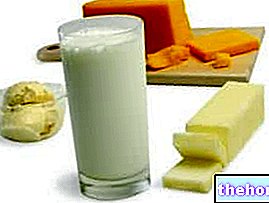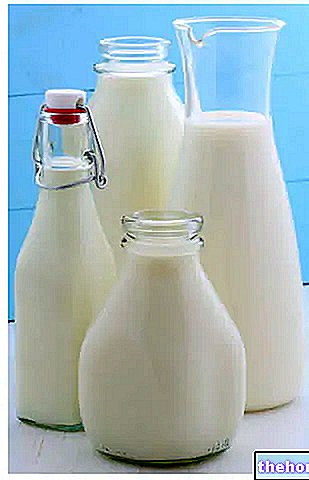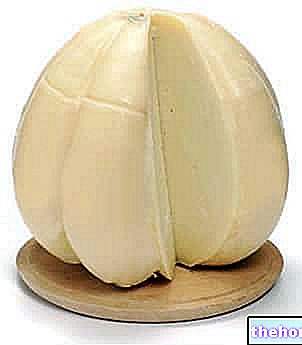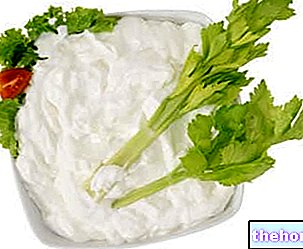Attention!
The term "milk of", if referring to any product not constituted by mammary secretion, is to be considered conceptually improper.
Any possible reference in the text has the sole purpose of adapting to the terminology with which most frequently (in colloquial terms) refers to such products; therefore, it is not opposed to the current legislative framework.
Introduction
Rice milk is a drink with an appearance similar to cow's milk, obtained industrially by macerating the grains of the homonymous cereal in a broth of water, then adding enzymes and pressing everything;

Properties of rice milk
The main advantage of rice milk is the absence of lactose, which makes it suitable also for the diet of people intolerant to this sugar; moreover, cow's milk proteins are lacking, to which some subjects, including infants, develop hypersensitivity. However, infant formulas consist of rice hydrolysates, ie products in which the protein fraction of the food is reduced to simpler molecules to further reduce its antigenic potential, ie the ability to trigger allergic reactions.
Unfortunately, in addition to lactose, in rice milk there is the absence, or in any case the deficiency, of some precious nutrients contained within cow's milk. For example, vitamin B12 and vitamin D are lacking, while the calcium concentrations are significantly lower, as well as the protein content and its biological value. Not surprisingly, infant formulas are profoundly adapted to match the composition of breast milk; for example, the addition of taurine, carnitine and essential amino acids such as lysine is foreseen.
In rice milk there is an abundance of simple sugars derived from the spontaneous hydrolysis of starch, which, together with the other characteristics, make it an easily digestible energy drink. The lipid fraction is in fact modest and unlike that of cow's milk, it is cholesterol-free, very poor in saturated fats and rich in polyunsaturated fatty acids.
Rice milk: potential indications
Vegan food styleLactose intolerance
Allergy to milk proteins
Allergy to soy protein
Need to moderate the dietary intake of saturated fatty acids and cholesterol
Low protein diets (e.g. for kidney problems)
Rice milk: potential contraindications
Rice milk may be contraindicated in the presence of diabetes or impaired glucose tolerance. In fact, it contains important quantities of simple sugars, digested and rapidly absorbed in the intestine, with a consequent rise in blood sugar. For the same reason, rice milk should be consumed in moderation by obese or overweight people. Finally, it should be remembered that non-enriched rice milks are low in calcium, vitamins A, D and B12 and proteins, all important nutrients for the growth of children, but also during pregnancy, breastfeeding and old age.The pleasant taste of rice milk (given by the richness in simple sugars), together with the low allergenicity, the absence of cholesterol, gluten and saturated fatty acids, the lower environmental impact and the vegetable origin so dear to vegans, is causing the to the product a moderate commercial success.
The consumer should choose products obtained from brown rice, preferably from organic farming, and enriched with nutrients such as calcium, vitamin D and vitamin B12. These days, we must also consider the problem of the certainly not insignificant cost of the drink, which affects the family budget but which can be bypassed by producing rice milk at home. The recipes in this sense are numerous, but all based on the use of rice (preferably wholemeal), water and sometimes starch, sea salt and vanilla. The simplest recipes involve cooking the rice for about an hour in two parts. water (one cup of rice in two cups of water); the flame will be quite lively until boiling, after which it will be kept at minimum values. The contents of the pot will then be left to rest under the same conditions, under a lid, for about an hour, without stirring. The cooking will be completed when the rice has absorbed all the water, at this point it is sufficient to take a handful (four tablespoons of rice) and place it in a blender together with a liter of water; before consumption, the rice milk thus obtained will obviously be filtered with a sieve or better still with gauze. At the consumer's discretion, the addition of aromas such as vanilla, cinnamon, cocoa and sea salt to the rice milk remains.
Homemade Rice Milk - Alice's Video Recipes
Homemade Rice Milk - Video Recipe
Problems with playing the video? Reload the video from youtube.
- Go to the Video Page
- Go to the Video Recipes Section
- Watch the video on youtube
Other Cereals and Derivatives Amaranth Wheat starch Corn starch Rice starch Modified starch Oat starch Bulgur Whole grains Corn Flakes Crackers Oat bran Bran Cus cus Amaranth flour Oat flour Buratto flour Spelled flour Buckwheat flour Corn flour Corn flour Millet Barley flour Quinoa flour Small spelled flour (Enkir) Rice flour Rye flour Sorghum flour Flour and semolina Whole wheat flour Manitoba flour Pizza flour Spelled Rusks Focaccia Nuts Wheat or wheat Wheat germ Burnt wheat Buckwheat Breadsticks Oat milk Rice milk Corn Maizena Malt Millet Muesli Barley Stale bread Unleavened bread and Pita Bread Carasau bread Egg pasta Rice pasta Wholemeal pasta Piadina Small spelled Pizza Pop corn Baked goods Quinoa Rice Basmati rice Converted rice White rice Rice Wholemeal Parboiled Rice Puffed Rice Venus Rice Rye and Horned Rye Semolina Semolina Sorghum Spaghetti Spelled Teff Tigelle Triticale OTHER ARTICLES CEREALS AND DERIVATIVES Categories Food Alcoholics Meat Cereals and derivatives Sweeteners Sweets Offal Fruit Dried fruit Milk and derivatives Legumes Oils and fats Fish and fishery products Salami Spices Vegetables Health recipes Appetizers Bread, Pizza and Brioche First courses Second courses Vegetables and Salads Sweets and Desserts Ice creams and sorbets Syrups, liqueurs and grappas Basic Preparations ---- In the Kitchen with Leftovers Carnival Recipes Christmas Recipes Dietary Recipes Light Recipes Woman's Day, Mother's Day, Dad's Day Functional Recipes International Recipes Easter Recipes Recipes for Celiacs Recipes for Diabetics Holiday Recipes Valentine's Day Recipes Vegetarian Recipes Protein Recipes Regional Recipes Vegan Recipes























-nelle-carni-di-maiale.jpg)




